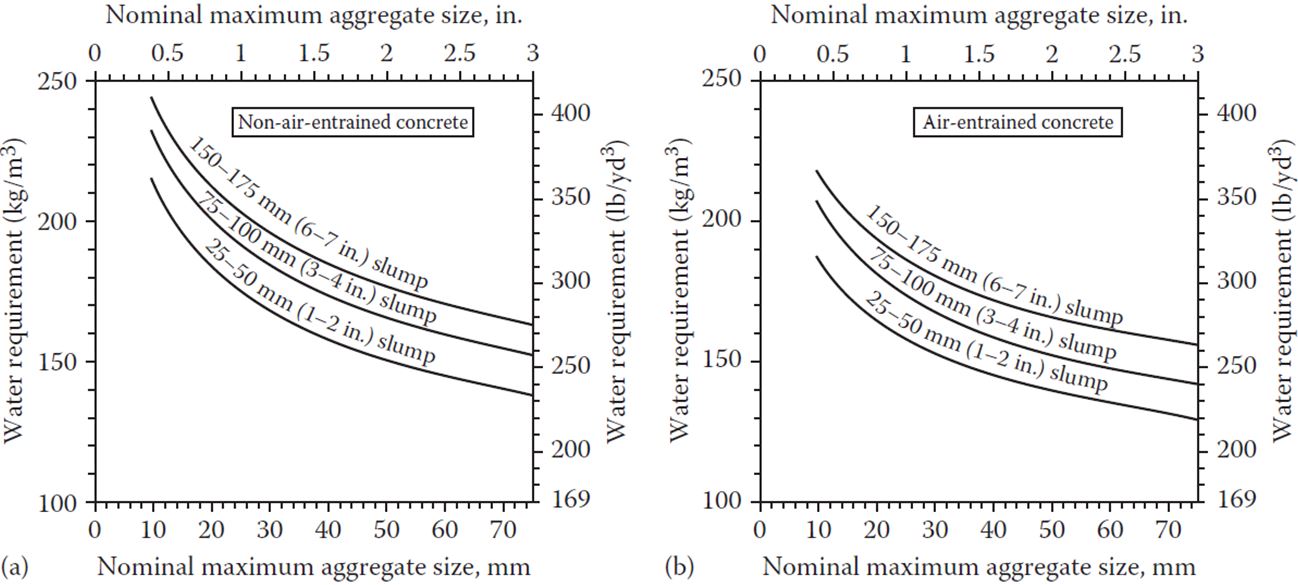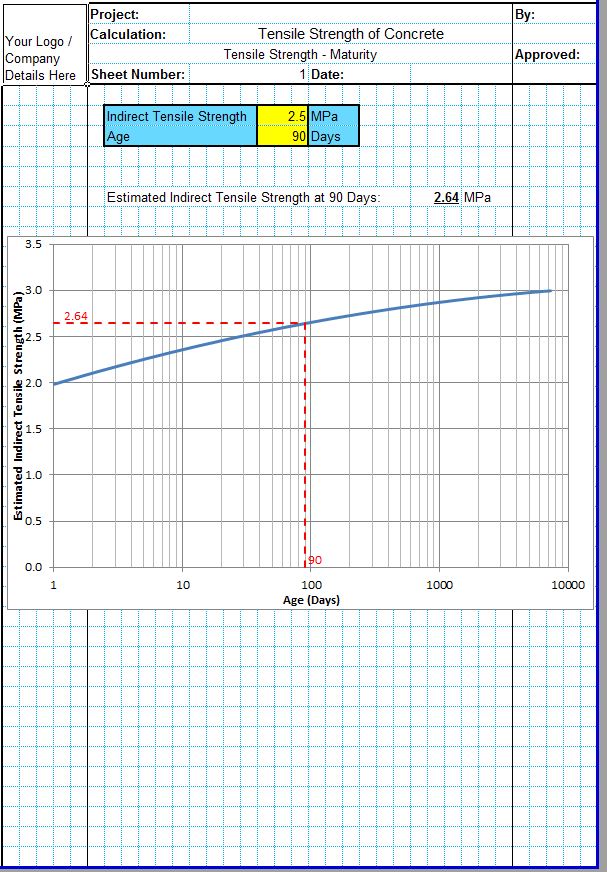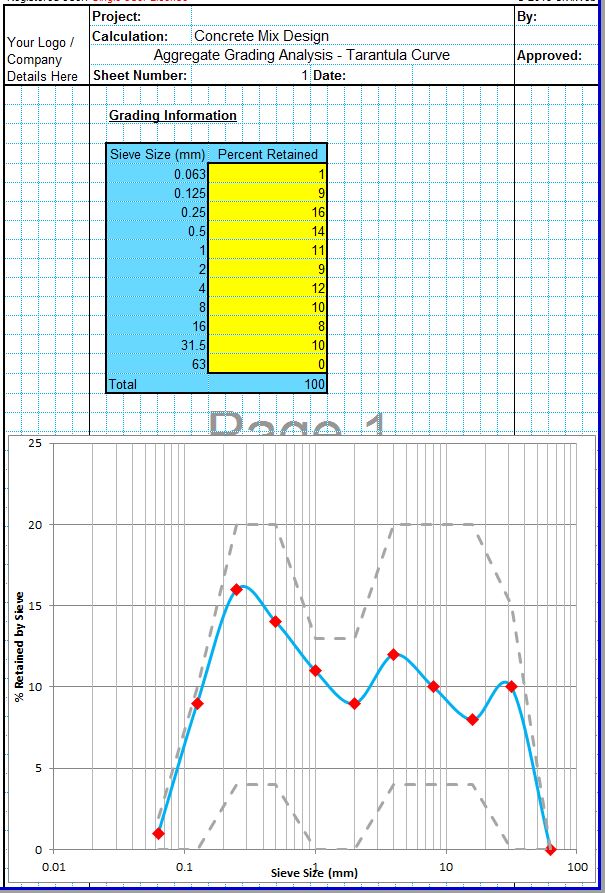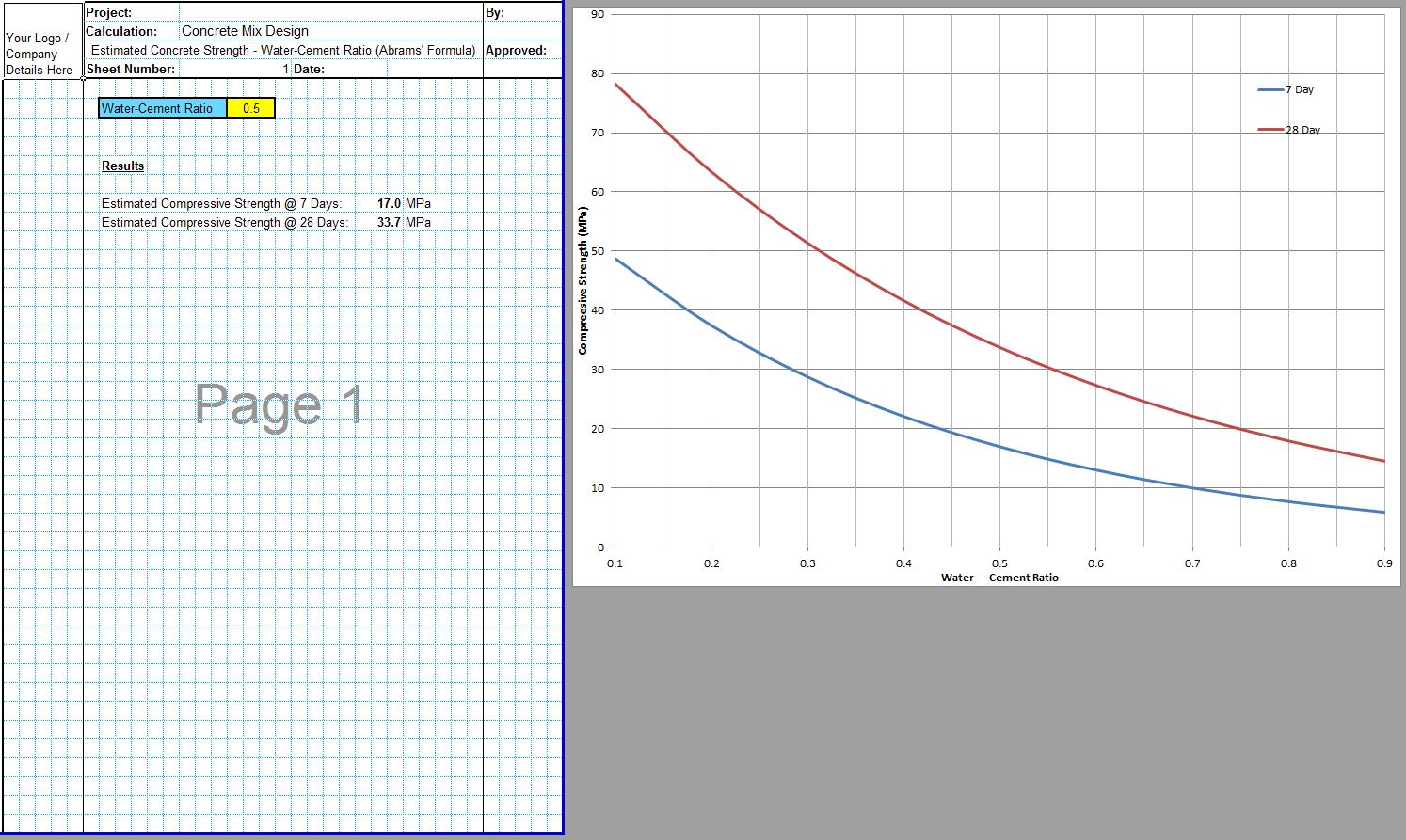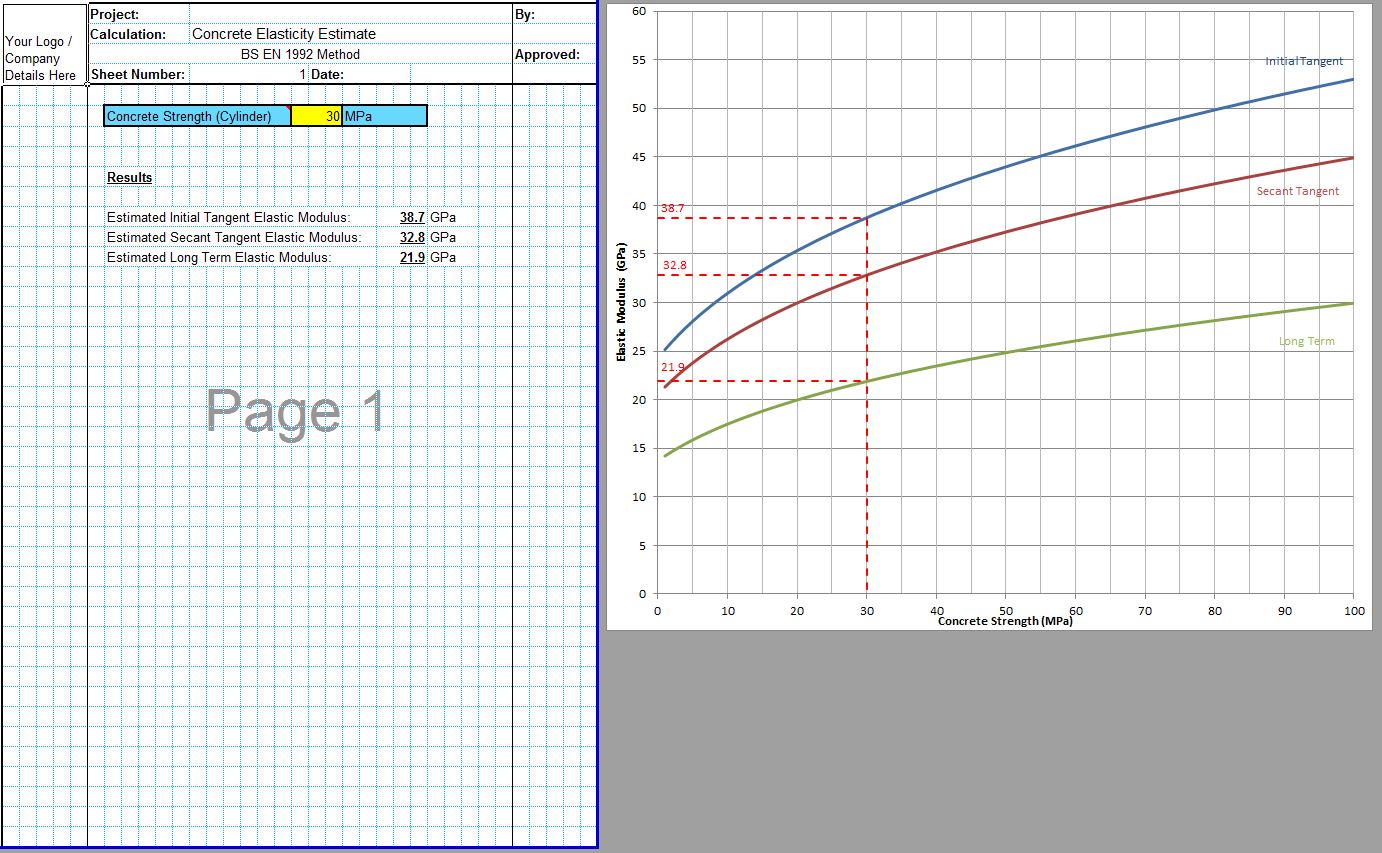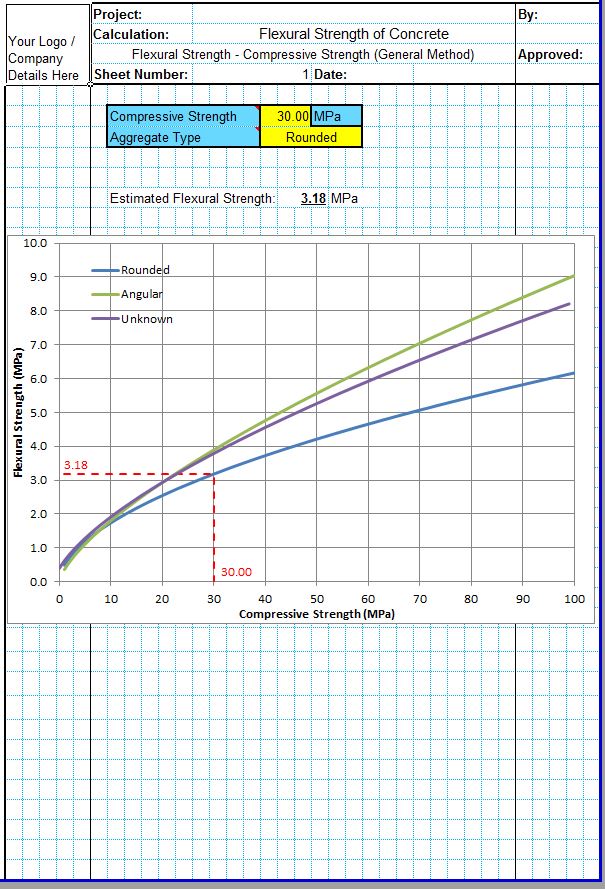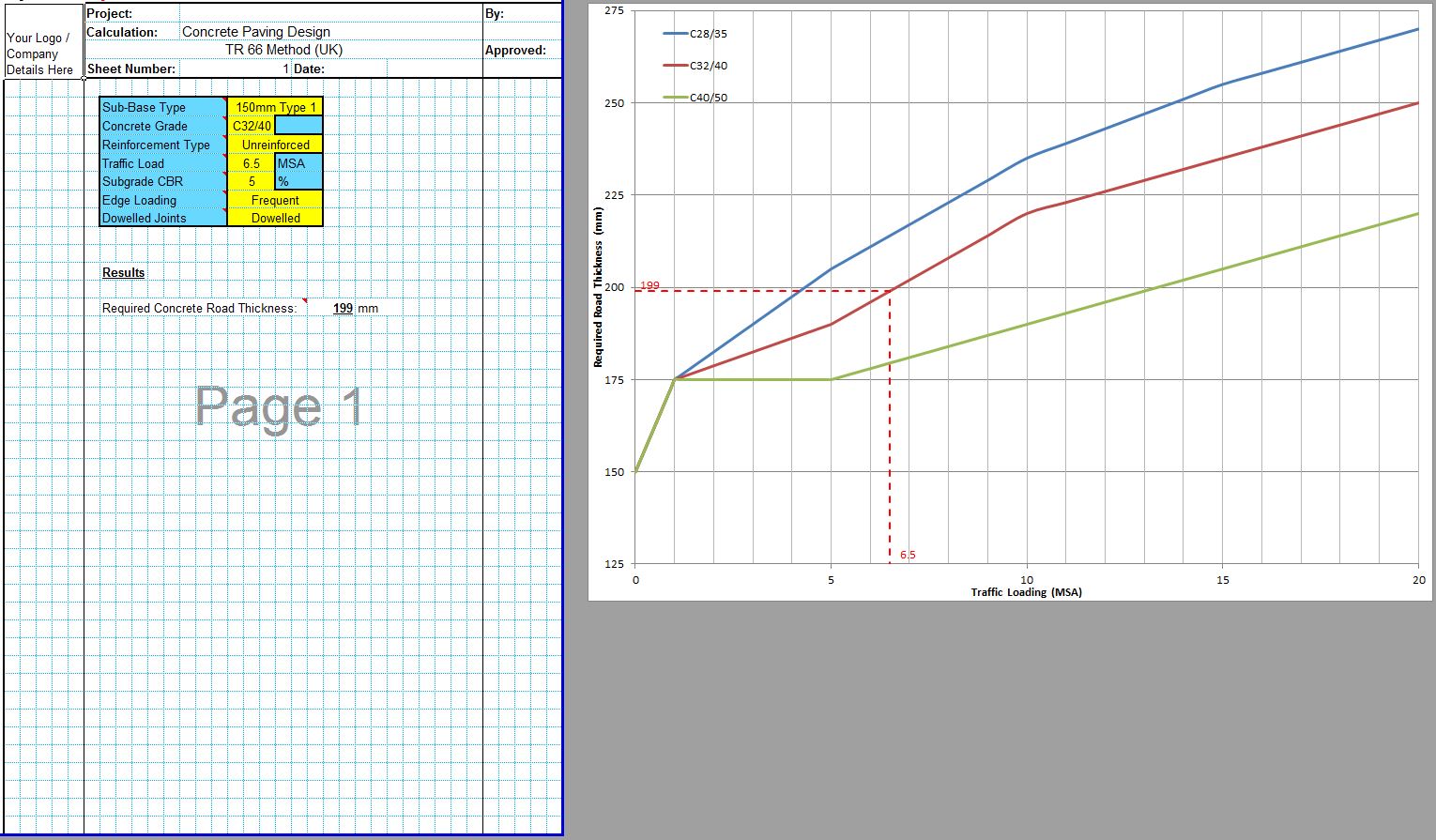The workability of concrete describes the consistency and ability of fresh concrete to flow and be formed. The workability of concrete is measured using a concrete slump test and is often referred to as concrete slump or the consistency of the concrete. The required workability of the concrete depends on the site conditions and the shape which the concrete is going to be formed into. The workability of the concrete also depends on the type of finish which is going to be applied to the concrete.
Workability of Concrete Definition
The workability of concrete is a general term used to describe the fresh concretes ease of placing, consolidating and finishing without segregation or other harmful effects. Several other terms are used for these or similar properties of fresh concrete including consistency of the concrete which is the ability of the concrete to flow and plasticity which is the concrete’s ease of molding. Generally in the European Standards workability is referred to as consistence or consistency.
High workability will enable the fresh or plastic concrete to be easily handled and placed. Workability is also beneficial to the hardened concrete as a workable mix is much more likely to achieve full compaction, leading to higher density, higher strength and lower permeability. The workability of the concrete is however usually proportional to the water content of the mix, so a balance between strength and impermeability on one hand and highly workable easily placed concrete is often required.
Factors Affecting the Consistency of Concrete
The workability of concrete can be improved by a number of additives and concrete mix design choices. Some of these are detailed in this section.
- Water Content – The most important factor impacting on the workability of the concrete is the water content. Increasing the water content will increase the concrete slump, flow and the compactibility of the concrete, thereby increasing its workability. Further information on the effects of water content in concrete can be found in our Water Cement Ratio in Concrete post.
- Water Reducing Admixtures – As well as increasing the workability, a higher water content will also reduce the hardened concrete’s strength and increase the permeability and bleeding. For this reason water reducing admixtures are used to increase the workability of the mix without increasing the water content. Further information on the effects of water reducing admixtures can be found in our Concrete Plasticizers post.
- Aggregate Content – The amount of aggregates in the mix affects the workability. Generally more aggregates in the mix will reduce the workability by decreasing the water content.
- Aggregate Grading – The grading of the aggregates has a significant impact on the consistency of the concrete mix. If the mix contains too few fine aggregates it will be harsh and difficult to work, if there are too many fine aggregates the mix can become sticky and difficult to finish. A uniform grading improves workability by filling the voids and reducing the locking between the larger aggregate particles. Further information is included in our Grading of Aggregates in Concrete post.
- Aggregate Shape – Angular aggregate particles are generally preferred for concrete as they increase the flexural strength of the hardened concrete. This is particularly the case for concrete pavements and other applications where the flexural strength of the concrete is critical. However the angular particles are more likely to lock together and therefore reduce the workability of the concrete. Rounded or marine aggregates increase the workability as they do not have angular surface to lock together but this decreases the flexural strength of the hardened concrete. Where high flexural strength is required angular aggregates are usually specified and the workability of the concrete is improved using more water, a water reducing admixture or higher entrained air content to compensate. Further information is included on the effects of differently shaped aggregates in our Flakiness Index post.
- Entrained Air – Air entrained in the fresh concrete during mixing increases the workability of the concrete by acting as a lubricant between the aggregate particles. A high air content is usually specified in concrete pavements to protect against freeze-thaw damage, and can partially offset the workability issues with using angular aggregates as explained above. However too much entrained air can lead to a mixture which is sticky and difficult to finish, as well as reducing the strength. Further information can be found in our Air Entrained Concrete post.
- Setting Time – The workability of the concrete will naturally change as the concrete mix loses water to evaporation, absorbed by aggregate or used for hydration as the concrete starts to set. The concrete will become progressively less workable the longer the time between mixing and placing. For some projects which include very long transportation times this effect may need to be compensated for to ensure adequate workability of the concrete at time of placement.
- Temperature – The temperature of the concrete will affect the setting time and therefore also the workability of the mix at time of placement. A higher temperature will accelerate the evaporation of water and the hydration process, reducing the workability at time of placement. This can be a particular concern for concrete pavements and other concrete projects where a large surface area is open to the atmosphere after placement.
- Cement Fineness – The fineness of the cement also has a small impact on the workability of the concrete mix. A finer cement will generally be less workable.
- Supplementary Cementitious Materials (SCMs) – The presence of SCMs in the concrete mix will also affect workability. Fly Ash and Ground Granulated Blast Furnace Slag (GGBS) have both been found to improve the workability of the concrete due to the spherical shape of Fly Ash and the glassy texture of GGBS particles. Microsilica will greatly increase the water requirements of the mix therefore reducing workability, particularly when specified at a high concentration. Further information can be found in our Supplementary Cementitious Materials post.
Slump Value for Different Grades of Concrete
Typical concrete mix designs for different concrete slump test values are shown in the table and graphs presented below.
Typical Concrete Slump Test Values
The slump test is the most commonly used measure of consistency or workability of concrete. For this reason the concrete slump is often specified to ensure that the concrete supplied is sufficiently workable to place. The specified slump test value will then be used to determine the quantity of water required in the mix. The slump test can also act as an indicator to flag up any changes which may have occurred to the materials in the mix. The slump cone test is described in BS EN 12350-2 and ASTM C143.
The slump test value can be specified as either a slump class or a target value with an acceptable deviation tolerance. The required slump test value will depend on the manner of placement and the type of concrete member. The slump classes are defined in BS EN 206, as shown below.
Concrete Society TR 34 recommends using a target slump of 100mm for concrete pavements, with tolerances of ± 30mm, which is slightly tighter control than specified in BS 8500. Concrete Society TR 66 also recommends that a target concrete slump test value of 140mm is specified for concrete when fibres are to be added later. The inclusion of steel fibres in the mix will sometimes reduce the slump value of the concrete by up to 30mm – 40mm. If steel fibres or macro-synthetic fibres are to be used a higher target concrete slump of 140mm should be specified to compensate for this effect. Micro-synthetic fibres will have a lesser effect but can still reduce the concrete slump by around 10mm.
Slump Test
The slump test measures the deformation of the concrete under its own weight. This test is described in BS EN 12350-2 and ASTM C143. ASTM C1611 is used for self compacting concrete mixes.
Therefore the test does not indicate the mixes workability under dynamic conditions such as those present during compaction, vibration or finishing. A number of other test methods have been developed to measure different concrete workability properties. The compacting factor test measures the energy required to compact the concrete. This test is described in BS EN 12350-4. The Vebe test measures the consistency of dry concrete mixes. This test is described in BS EN 12350-3.
Allowable tolerances depend on whether the concrete slump tests are completed on spot samples taken at one time or composite samples taken at a number of times during the concrete delivery. The allowable tolerances given in BS 8500 are given in the above table, with the values in brackets recommended for concrete pavements. It is recommended that a tolerance of ± 30mm is specified for onsite checks of concrete slump test values. This slightly tighter control will need to be agreed with the supplier but can be useful in controlling any variability between batches of concrete delivered which can lead to surface blemishes, delamination and other defects.
It is important that additional water is not added to the mix onsite to improve workability. Adding water will increase the water-cement ratio of the concrete and will affect many properties of the hardened concrete including strength and permeability. If the mix is not sufficiently workable and is outside of the specified slump then it should not be used.
